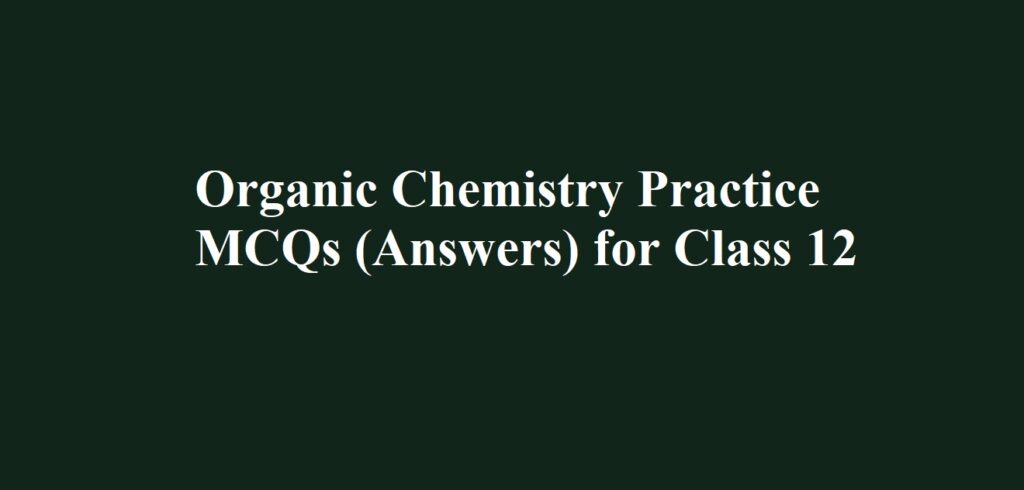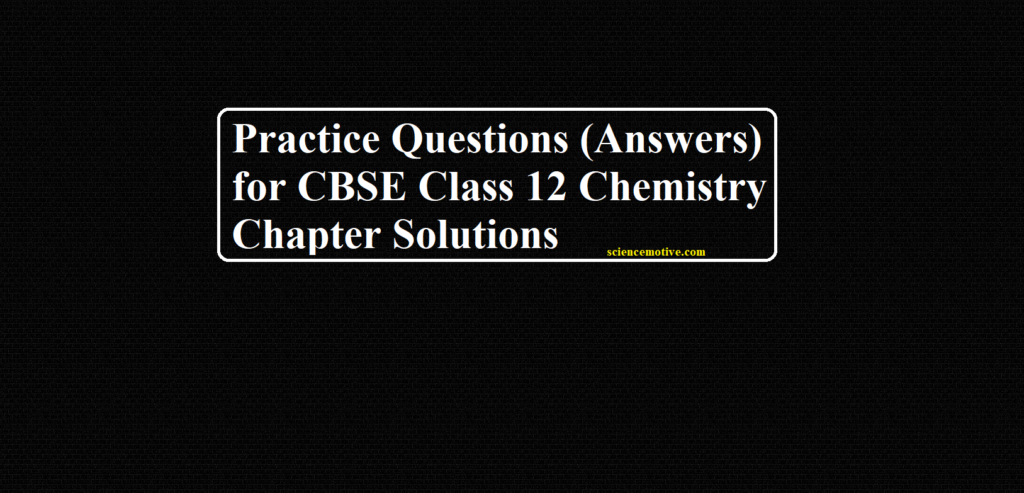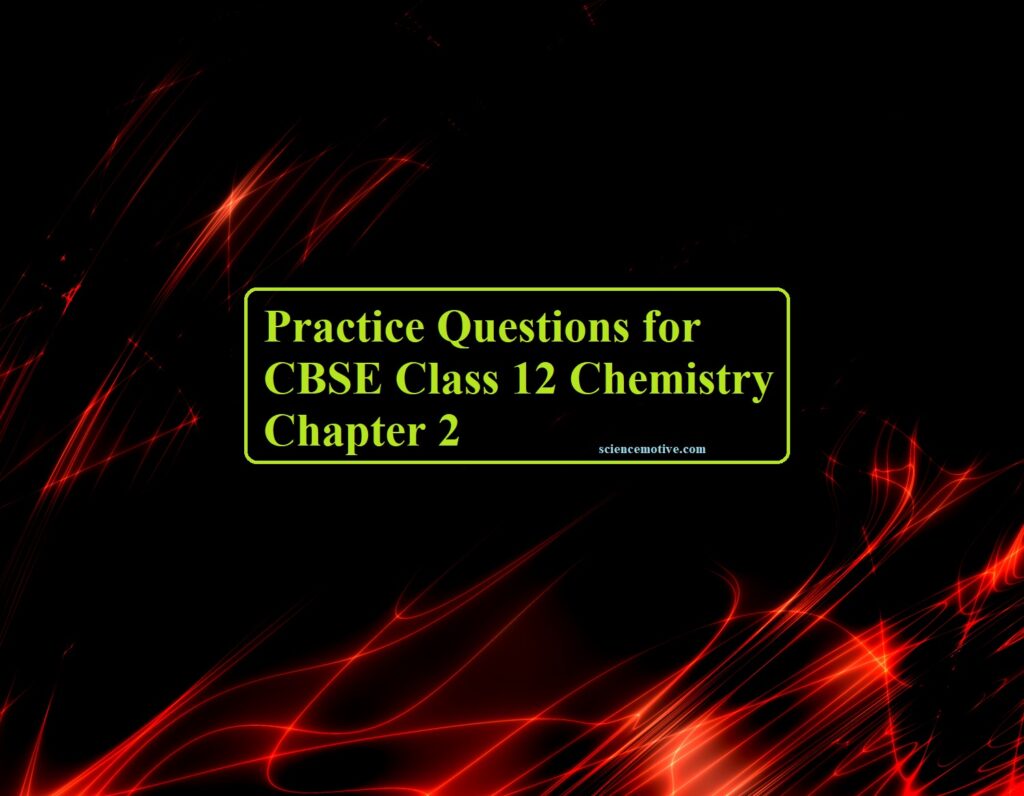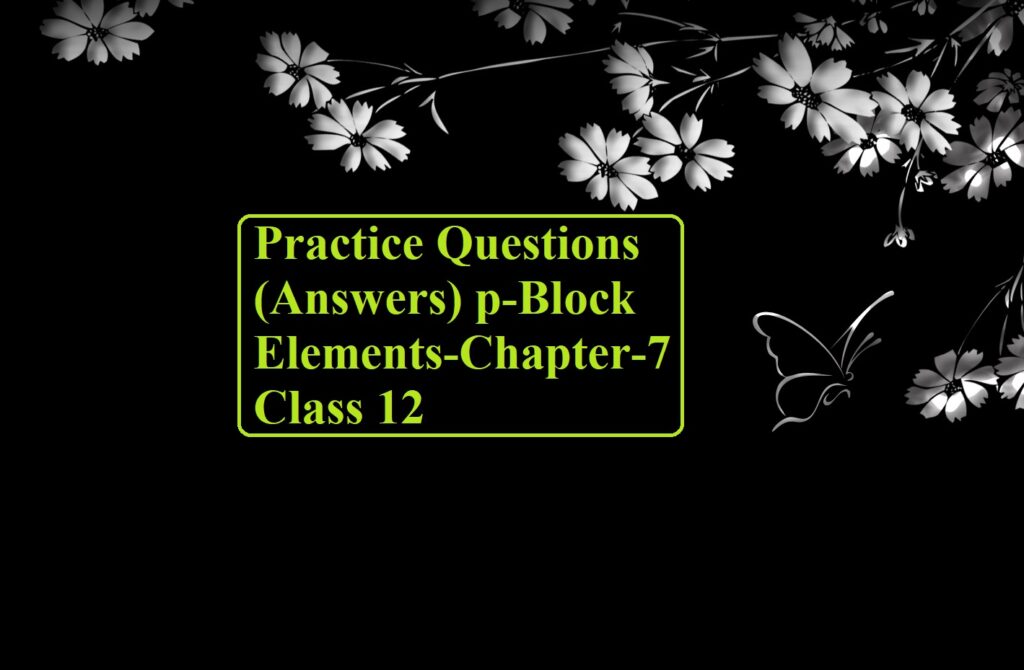Organic Chemistry Practice MCQs (Answers) for Class 12
Organic Chemistry Practice MCQs (Answers) for Class 12
Ans 1. (b) Propan-2-ol
Ans 2. (d) Propanone
Ans 3. (b) 1-Methylcyclohexan-1-ol
Ans 4. (d) X on reaction with Na, does not produce H2 gas
Ans 5. (d) Benzyl alcohol
Ans 6. (c) Treatment with pyridinium chlorochromate
Ans 7. (b) Substitution reaction
Ans 8. (c) B, C
Ans 9. (b)
Ans 10. (b) o-nitrophenol
Ans 11. (d) m-Chlorophenol
Ans 12. (a) Propan-1-ol, butan-2-ol, butan-1-ol, pentan-1-ol
Ans 13. (a) CH3CHOHCH3
Ans 14. (c) Both types
Ans 15. (a) Pri > Sec > Ter
Since Na metal is basic and alcohols are acidic in nature, therefore, the reactivity of Na metal towards alcohols decreases as the acidic strength of alcohols decreases, i.e. in the order 10 > 20 > 30.
Ans 16. (c) The assertion is a correct statement but the reason is the wrong statement.
Ans 17. (d) The assertion is a wrong statement but the reason is the correct statement.
Ans 18. (a) Assertion and reason both are correct and the reason is the correct explanation of assertion.
Ans 19. (c) The assertion is a correct statement but the reason is the wrong statement.
Ans 20. (e) Both assertion and reason are correct statements but the reason is not the correct explanation of assertion.
Ans 21. (a) Assertion and reason both are correct and the reason is the correct explanation of assertion.
Ans 22. (e) Both assertion and reason are correct statements but the reason is not the correct explanation of assertion.
Ans 23. (a) Assertion and reason both are correct and the reason is the correct explanation of assertion.
Ans 24. (d) Replication
Ans 25. (a) An enzyme
Ans 26. (b) A globular protein
Hemoglobin is a globular protein of four subunits, each subunit having a heme moiety and a polypeptide chain (Two α and two β chains).
Ans 27. (a) Does not undergo hydrolysis
Ans 28. (a) Cane sugar
Ans 29. (c) D-glucose
Ans 30. (b) Anomers
Ans 31. (d) Glycine
Ans 32. (b) Monosaccharide
Ans 33. (d) Aldose
Ans 34. (c) H-bond
Ans 35. (d) Both (a) and (b)
Ans 36. (d) Hydroxylamine
Ans 37. (a) n-hexane
Ans 38. (a) Alpha amino acids
Ans 39. (c) 2,4 – DNP reagent
Ans 40. (a) Five
Organic Chemistry Practice MCQs (Answers) for Class 12
To get the Questions Click the Post
Organic Chemistry Practice MCQs for Class 12



